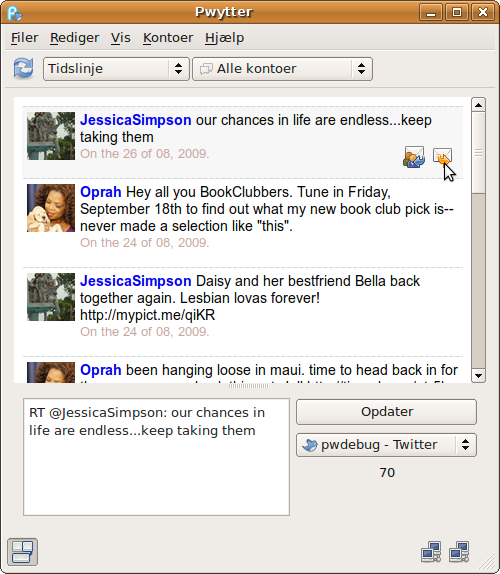This summer I’ve been working on Pwytter as a part of Google Summer of Code. My project was to separate the backend from the frontend and make a new user interface with PyQt. In my original propsal, I also wanted to do a GTK frontend, however, this was dropped in exchange for a more polished Qt frontend (I do have the basics for a GTK frontend lying around, if anybody is interested, but it’s far from usable).
While writing a backend for Pwytter I also created some abstractions for micro-blogging services, so that Pwytter supports multiple accounts and multiple services (currently Twitter and Identi.ca). With this new backend all the messages are also cached in an sqlite database, enabling Pwytter for work while offline.

I also added theming support to the Qt frontend I wrote for Pwytter, above is a screenshot of Pwytter running the “Twitter-like” theme (as you can see have also be translated, so far only to Danish). Pwytter uses WebKit to display tweets, users and other types of content, thus themes can customize the GUI using HTML templates and Qt stylesheets. Documentation for writing such themes can be found in the project wiki, I plan to write an article on subject when this Pwytter branch is released. So far this Pwytter branch is still under development, and interested developers can find install instructions in the project wiki.
